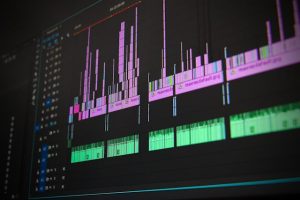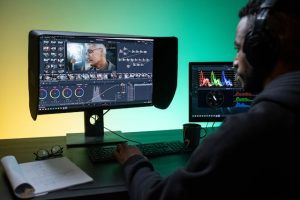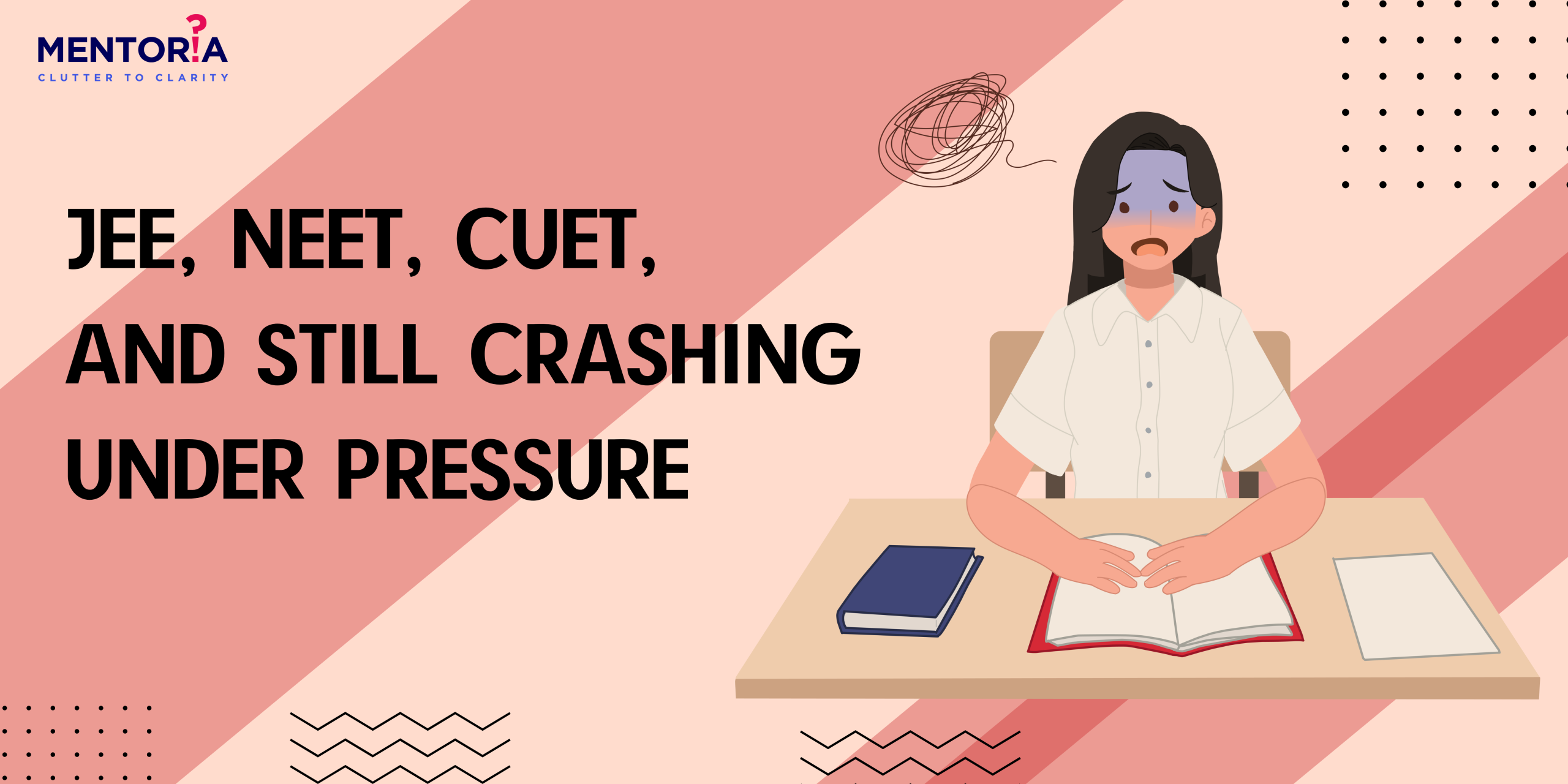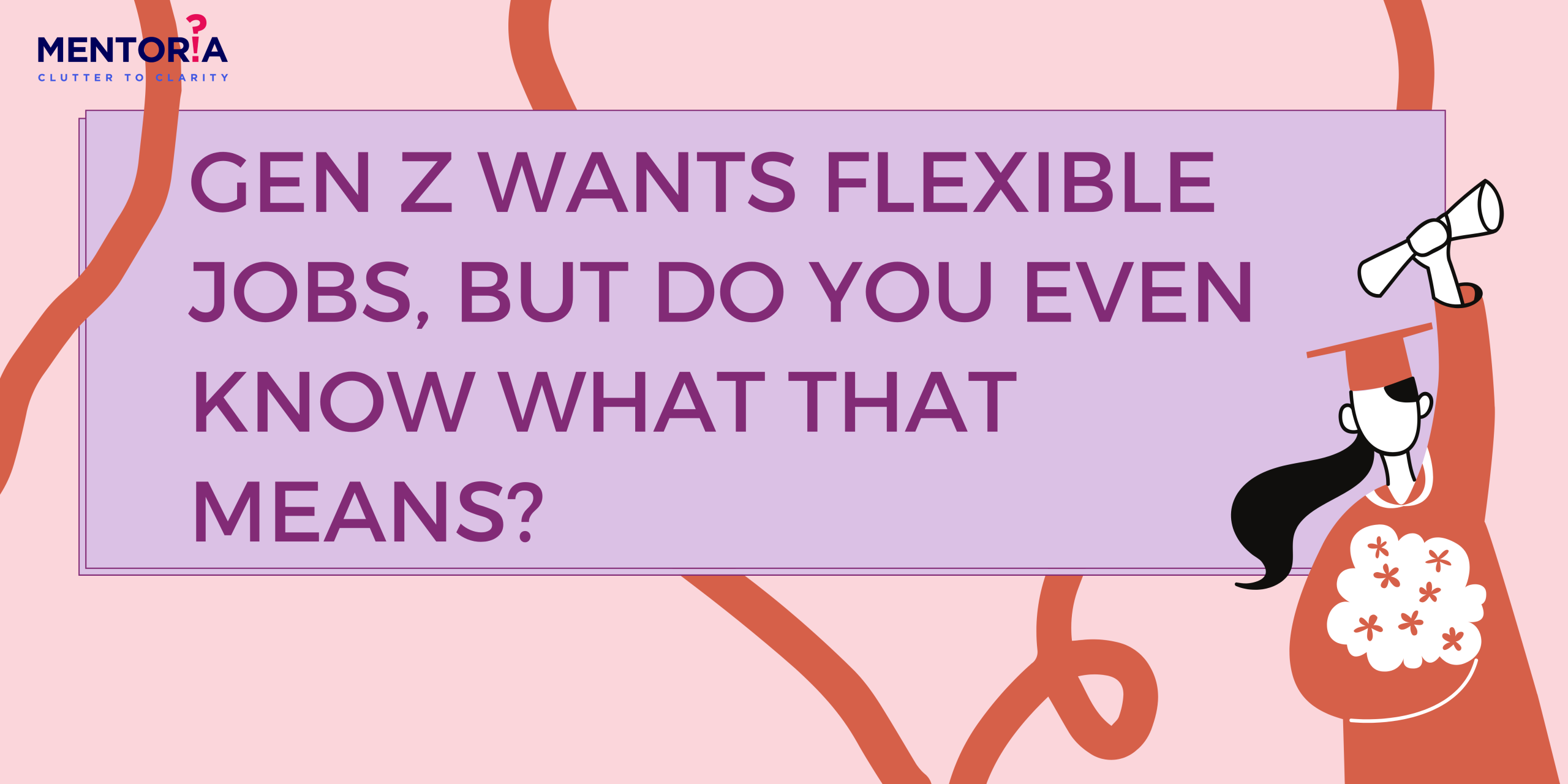7 Must-Have Skills For Video Editors In The ChatGPT Era
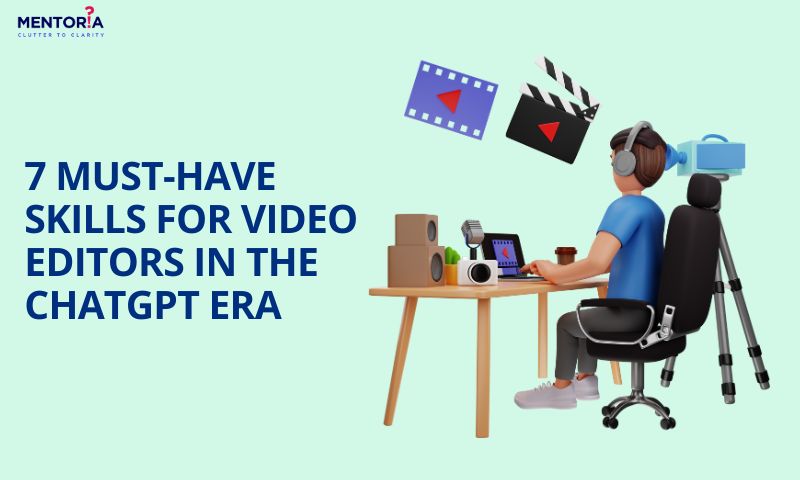
Did you know that YouTube, Instagram, Facebook, and TikTok all have something in common? It’s the ability to keep people hooked on their smartphones, tablets, or laptops. Nowadays, you can find videos about almost anything – from unique ways to tie your shoelaces to rocket launching tutorials. What’s more, video creation plays a significant role in modern marketing campaigns for various products. It’s an engaging yet complex process that demands a range of skills, knowledge, and experience. And with the rise in AI and advanced tech that makes video editing tasks a piece of cake, it’s important to stay abreast and do the up-skilling.
In this article, we’re going to talk about 7 stand-out skills that can help you stand out as video editor in the chat GPT era. So, let’s jump right in.
Storytelling Techniques
Every captivating video is built on the foundation of storytelling. As a video editor, it’s not just about assembling clips, but rather crafting a narrative that truly engages viewers and leaves a lasting impression. Let’s take a closer look:
Why It’s Essential And How To Hone It
Storytelling techniques are crucial in video editing because they help create a cohesive and engaging narrative that captivates the audience. Video editing is more than just putting together clips; it’s about crafting a story that resonates with viewers. By using storytelling techniques, editors can evoke emotions, build suspense, and keep viewers interested from start to finish. This can make the difference between a forgettable video and one that leaves a lasting impression. Storytelling techniques also help convey complex ideas and messages in a clear and compelling way, making the video more effective in delivering its intended message. Now let’s understand how to hone this skill
Understanding Narrative Structure
Check out the key ingredients of storytelling: exposition, rising action, climax, falling action, and resolution. These are the foundation of your video’s story and play a crucial role in creating a seamless narrative. Let’s say you’re making a travel vlog; the exposition would introduce the destination, the rising action would feature exciting adventures and obstacles, and the resolution would offer a reflective conclusion to the whole experience.
Emotional Engagement
Create a strong bond with your audience by employing editing techniques such as close-up shots, thoughtfully selected music, and pacing to evoke specific emotions like happiness, sadness, excitement, or tension. For example, in a charity video, capturing heartfelt close-ups of individuals’ expressions accompanied by touching music can ignite empathy and inspire viewers to make a difference.
Character Development
If your video includes actual individuals or made-up characters, make sure to concentrate on building their personalities and motivations. Display their progress, development, and challenges throughout the video to make them relatable and captivating. For instance, in a documentary about a chef, highlighting their love for cooking and the obstacles they have conquered brings depth to the narrative.
Visual Storytelling
Pictures can say a lot, so make sure you take notice of the visual aspects of your video. Utilise visuals to communicate information, create a certain atmosphere, and improve the storytelling. For example, in a product commercial, visually showcasing the product’s features and advantages can effectively convey its worth to the viewers.
Structuring Scenes
Every scene in your video needs to have a purpose and move the story forward. Make sure the transition between scenes is seamless so that viewers stay engaged. For instance, in a short film, going from an intense action scene to a calm moment of reflection can create a striking contrast and build suspense.
Maintaining Tension And Suspense
Get your audience hooked by skillfully crafting tension and suspense in your video. Employ tactics like leaving them hanging, dropping hints, and throwing unexpected curveballs to keep them on their toes and craving for more. When it comes to a thrilling movie trailer, alternating between nail-biting moments and eerie music can build up a thrilling anticipation.
Effective Use Of Voiceover And Dialogue
Make sure that if your video has voiceover or dialogue, it adds to the storytelling instead of taking away from it. Use simple and concise language that gives more meaning and understanding to the visuals. In a documentary about environmental conservation, a captivating narration can give valuable insights into the issue while the accompanying footage shows the impact.
Creating A Memorable Conclusion
Craft a strong ending that wraps up all the loose ends and reinforces the main point of your video. Whether it’s a call to action, a moment of reflection, or a surprising twist, the conclusion should leave viewers feeling fulfilled and motivated. For instance, in a friendship-themed short film, a heartfelt closing monologue can leave viewers with a warm and connected feeling.
By becoming proficient in these storytelling methods, you’ll enhance your video editing abilities and produce content that deeply connects with viewers. Keep in mind that storytelling is an artistic skill, and by honing it through practice and imagination, you can construct narratives that have a profound and enduring effect.
Colour Grading Mastery
Colour grading plays a vital role in video editing as it enhances the overall appearance and vibe of a video by adjusting its colours. Although artificial intelligence (AI) has made significant progress in various fields, it still falls short when it comes to replicating the intricate and artistic choices made by human video editors in colour grading.
Why It’s Essential And How To Hone It
Choosing the correct colours during colour grading is essential in video editing as it greatly influences the mood, aesthetic, and message of a video. By selecting the appropriate colours, you have the power to evoke emotions and communicate messages effectively, enhancing the viewer’s experience. Moreover, colour grading ensures consistency throughout a video or series, maintaining a cohesive visual style. It also helps fix any lighting or camera setting issues, resulting in a polished and professional final product. Ultimately, mastering colour grading gives video editors creative control and helps them achieve the desired look and feel for their videos. Here’s how you can hone this skill:-
Artistic Vision
Human video editors add their artistic touch and creativity to colour grading, capturing the essence and vibe of a scene to elevate the storytelling. They can make subjective choices based on aesthetics and emotions, which is a challenge for AI to imitate.
Understanding Context
Human editors can grasp the context of the video, understand who it is meant for, and know how to evoke the desired emotions. They can tweak the colours to make the experience more captivating and customised to the project’s unique requirements.
Fine-Tuning Detail
Colour grading is all about perfecting every aspect of the colour range, from the brightest highlights to the darkest shadows. Skilled editors have a sharp eye for detail and can make accurate tweaks to ensure the video has the desired appearance and maintains a consistent look.
Adaptability And Creativity
Video projects are always unique, requiring adaptability and creative troubleshooting. Video editors have the opportunity to experiment with different colour grading techniques, styles, and effects to achieve the desired outcome, pushing the boundaries of visual storytelling.
Emotional Connection
Colours have the power to stir up emotions, and skilled editors know how to employ colour grading to establish a stronger emotional bond with the viewers. They can manipulate colours to intensify the atmosphere, communicate messages, and elicit particular emotions, thereby adding depth and significance to the visuals.
Personalisation And Style
Human editors add their personal touch and style to colour grading, giving it a unique look that distinguishes their work. Whether it’s a movie, a documentary, or an advertisement, human editors can customise the colour grading to match the project’s specific aesthetic and storytelling objectives.
Although AI can help with simple colour correction, it’s the human touch in colour grading that takes a video from decent to outstanding, giving it a visually captivating and emotionally resonant quality.
Audio Editing
Audio editing plays a crucial role in video production as it involves refining and improving the sound elements to enhance the overall audio quality. It encompasses various tasks like adjusting volume levels, eliminating background noise, incorporating music or sound effects, and ensuring seamless transitions between different audio tracks. Effective audio editing is vital for creating high-quality videos as it keeps viewers engaged and enhances the storytelling experience. Through meticulous audio editing, video creators can effectively communicate their message and evoke the desired emotions in their audience.
Why It’s Essential And How To Hone It
Here are eight key points to understand why it’s important and how it’s done.
- Sound Cleanup: Eliminate any unwanted noise or distractions from the audio, such as background hums or hisses, to give it a crisp and clear sound.
- Sound Effects: Take storytelling to the next level by incorporating sound effects like footsteps, door creaks, or car horns to create a more immersive experience.
- Audio Mixing: Blend different audio elements, such as dialogue, music, and sound effects, to create a balanced and harmonious sound mix.
- Volume Adjustment: Ensure that all audio elements are at the right volume levels, so nothing is too loud or too soft, allowing viewers to hear everything.
- Video Syncing: Perfectly synchronise the audio with the video, ensuring that the sound matches the on-screen action without any delays or inconsistencies.
- Music Selection: Choose the perfect music tracks to enhance the mood and emotion of the video, whether it’s uplifting and energetic or sombre and reflective.
- Smooth Transitions: Seamlessly transition between different audio clips or sections of the video to maintain continuity and avoid abrupt cuts.
- Final Touches: Fine-tune the overall sound mix by adjusting EQ settings, adding reverb or other effects, and making any necessary tweaks to achieve a professional and polished audio result.
By mastering audio editing, you can not only ensure that your videos sound great but also elevate the overall viewing experience for your audience.
Motion Graphics And Animation
Motion graphics and animation are essential components of video production, as they add dynamic visual effects that enhance storytelling and captivate audiences. Motion graphics utilise animated text, shapes, and graphics to convey information or illustrate concepts in an aesthetically pleasing manner. They can range from simple transitions to intricate and eye-catching designs. On the other hand, animation brings static images or characters to life through movement. This can involve traditional 2D animation, 3D animation, or a combination of both, depending on the desired style and complexity of the project. Whether it’s explainer videos, advertisements, or visual storytelling, motion graphics, and animation play a crucial role in captivating viewers and effectively conveying messages.
Why It’s Essential And How To Hone It
Here are eight key points to understand why they’re important and how they’re used.
- Visual Appeal: Motion graphics and animation add a touch of visual appeal to videos, making them captivating and keeping the viewer hooked from start to finish.
- Explaining Complex Concepts: They can simplify and make complex ideas or processes easy to understand by using visuals to clarify and illustrate concepts.
- Brand Identity: Motion graphics and animation have the power to strengthen a brand’s identity by cleverly integrating logos, colours, and other brand elements into the video. This not only adds a creative touch but also leaves a lasting impression on the viewers.
- Enhancing Storytelling: Adding visual cues, transitions, and effects can amp up the storytelling game. It’s like giving the narrative a boost and stirring up all sorts of emotions in the viewer.
- Highlighting Key Information: Motion graphics and animation have the power to emphasise important information or data points, making them more noticeable and ensuring that the audience can easily grasp them.
- Creating Visual Effects: You can utilise them to produce stunning visual effects like explosions, shape-shifting, or enchanting effects that would be challenging or even unattainable in real-life filming.
- Engaging the Audience: Motion graphics and animation can engage the audience by creating interactive elements or gamification features that encourage viewer participation and interaction.
- Differentiating Content: They can distinguish content from competitors by incorporating distinctive and imaginative visual elements that make the video stand out and leave a lasting impression.
By incorporating motion graphics and animation into videos, editors can create visually stunning and engaging content that resonates with viewers and helps convey information effectively.
Efficient Workflow Management
Efficient workflow management is crucial to ensure smooth and productive operations in any project or organisation. It requires careful planning, organising, and coordinating tasks, resources, and timelines to maximise productivity and minimise waste. To achieve effective workflow management, clear communication, well-defined processes, and the use of suitable tools and technology are essential to streamline tasks and promote collaboration among team members. By establishing efficient workflows, teams can enhance efficiency, meet deadlines consistently, minimise errors, and ultimately deliver high-quality results. Furthermore, continuous evaluation and optimisation of workflows are necessary to adapt to evolving needs and continually improve efficiency over time.
Why It’s Essential And How To Hone It
Here are eight key points to understand why it’s important and how it’s done.
- Time Savings: By simplifying your workflow, you can save valuable time by eliminating unnecessary steps and minimising downtime. This enables you to dedicate more of your energy towards creative endeavours.
- Organisation: It’s important to keep your files, assets, and project elements organised. This way, you can easily find what you need and avoid any confusion or losing your work.
- Consistency: Having consistent workflows in place guarantees that each project adheres to the same procedures, leading to a consistent level of quality and reliability in your work.
- Communication: Having effective communication with your team members or clients is crucial to ensure that everyone is on the same page and to minimise any misunderstandings or delays during the editing process.
- Version Control: Using version control systems helps avoid confusion and guarantees that everyone is collaborating with the latest files and assets.
- Automation: Automating repetitive tasks, like converting files or rendering, gives you more time to focus on creative work and minimises the chances of making mistakes.
- Feedback Loops: Setting up feedback loops with clients or team members enables timely reviews and revisions, guaranteeing that projects remain on schedule and meet the desired outcomes.
- Continuous Improvement: By continuously assessing and enhancing your workflow, you can pinpoint opportunities for enhancement and make adjustments to boost effectiveness and output in the long run.
With a solid grasp of efficient workflow management, you can optimise productivity, reduce mistakes, and consistently deliver top-notch videos within deadlines.
Adaptability To New Tools And Technologies
In the ever-expanding digital realm, where advancement flourishes through innovation, being able to embrace new tools and technologies is crucial for achieving success. In today’s ever-changing landscape, it’s not just advantageous but necessary to quickly embrace and utilise emerging software and innovations. This requires a mindset of constant curiosity and a dedication to continuous learning. By staying updated with industry trends, actively seeking new solutions, and fostering a culture of experimentation, both individuals and organisations can position themselves as pioneers of innovation. Adaptability not only allows for agility in navigating technological shifts but also builds resilience and empowers individuals to seize opportunities and drive meaningful change in an ever-evolving digital ecosystem.
Why It’s Essential And How To Hone It
Here are eight key points to understand why it’s important and how it’s done:
- Staying in the Loop: By staying updated with the latest tools, you can ensure that your skills stay relevant in an ever-evolving industry. This will not only help you meet the demands of your clients but also keep you ahead of the competition.
- Supercharge Your Productivity: Embracing new tools can give you a significant boost in efficiency. With their advanced features, you can edit faster and smoother, enabling you to meet even the tightest deadlines with ease.
- Broadening Your Skillset: Acquiring knowledge of different tools broadens your skillset, enabling you to tackle a diverse array of projects with ease.
- Igniting Innovation: Experimenting with unfamiliar tools can ignite your creativity, stimulating innovative concepts and techniques in video editing that distinguish you from others in the field.
- Quality Improvement: There are a few fresh tools available that come with advanced features to level up the quality of your work. This will lead to videos that are even more refined and visually captivating.
- Problem-Solving Skills: Using new tools can be a bit challenging at first, but it’s all about problem-solving. You need to figure out how to apply them to your projects and overcome any obstacles that come your way. It’s a learning process, but once you get the hang of it, you’ll be unstoppable!
- Networking Opportunities: Attending workshops or training sessions for these new tools not only helps you gain knowledge but also provides networking opportunities. You can connect with other professionals in the industry, opening doors for collaboration and knowledge exchange.
- Future-Proofing Your Career: Embracing new technologies is crucial for future-proofing your career. By staying up-to-date and relevant, you ensure that you remain in demand as the industry evolves. This safeguards your career against obsolescence
To navigate the ever-changing landscape of video editing, it’s important to stay adaptable and eager to learn. With confidence, you can continue to grow and excel in your career.
Collaboration And Communication Skills
Collaboration and communication skills are key abilities that form the foundation of successful teamwork and project achievement in various fields. Working together harmoniously towards a shared objective, collaboration involves combining different perspectives, expertise, and resources to achieve the best possible results. On the other hand, strong communication skills are crucial for expressing ideas clearly, actively listening to others, providing helpful feedback, and resolving conflicts in a friendly manner. These skills, when combined, create an environment of trust, transparency, and accountability within teams, making coordination and decision-making seamless. Furthermore, effective collaboration and communication are not only important within teams but also when interacting with clients, stakeholders, and partners, leading to increased productivity, innovation, and satisfaction overall.
Why It’s Essential And How To Hone It
Here are eight key points to understand their importance and how they contribute to success.
- Team Harmony: When team members collaborate and communicate effectively, they create a strong sense of unity, enabling them to work together towards a shared objective.
- Transparent Guidance: By promoting good communication, everyone can grasp their specific tasks and obligations, as well as the bigger picture of the project.
- Streamlined Productivity: Through clear communication, the editing process becomes more efficient, minimising misunderstandings and avoiding unnecessary delays.
- Creative Synergy: Collaboration enables team members to exchange ideas and enhance each other’s creativity, resulting in groundbreaking solutions and refined outcomes.
- Client Satisfaction: Having excellent communication skills is crucial for comprehending and fulfilling client expectations, resulting in happy clients and recurring business opportunities.
- Conflict Resolution: Through effective communication, teams can positively tackle conflicts and differences, leading to resolutions that ultimately benefit the project.
- Feedback Loop: Open communication is key to fostering a feedback loop within a team. This allows team members to provide valuable input, pinpoint areas that need improvement, and enhance the editing process.
- Professional Growth: Working together with others opens up doors for learning and honing new skills, which in turn helps each team member grow professionally.
To sum it up, having good collaboration and communication skills is crucial for creating strong teams, encouraging innovation, and producing top-notch video editing projects.
Become Next-Gen Editors Of Today
To stay ahead of AI-generated content, video editors must keep up with the rapid advancements in technology and improve their skills. By mastering video editing software and storytelling techniques, staying updated on current trends, paying close attention to detail, being collaborative and communicative, adapting to new technologies, and managing time effectively, video editors can ensure their relevance in this highly competitive industry. By constantly refining their skills, video editors can create exceptional content that surpasses what AI tools can do, setting themselves apart and securing their position in the future of video editing.
Mentoria’s personalised career guidance can serve as your guiding light. With Mentoria’s career guidance programme, you have the opportunity to explore and select the ideal path from a wide range of 3 streams, over 850 courses, and more than 12,000 careers. Uncover what truly brings out your potential with Mentoria.

